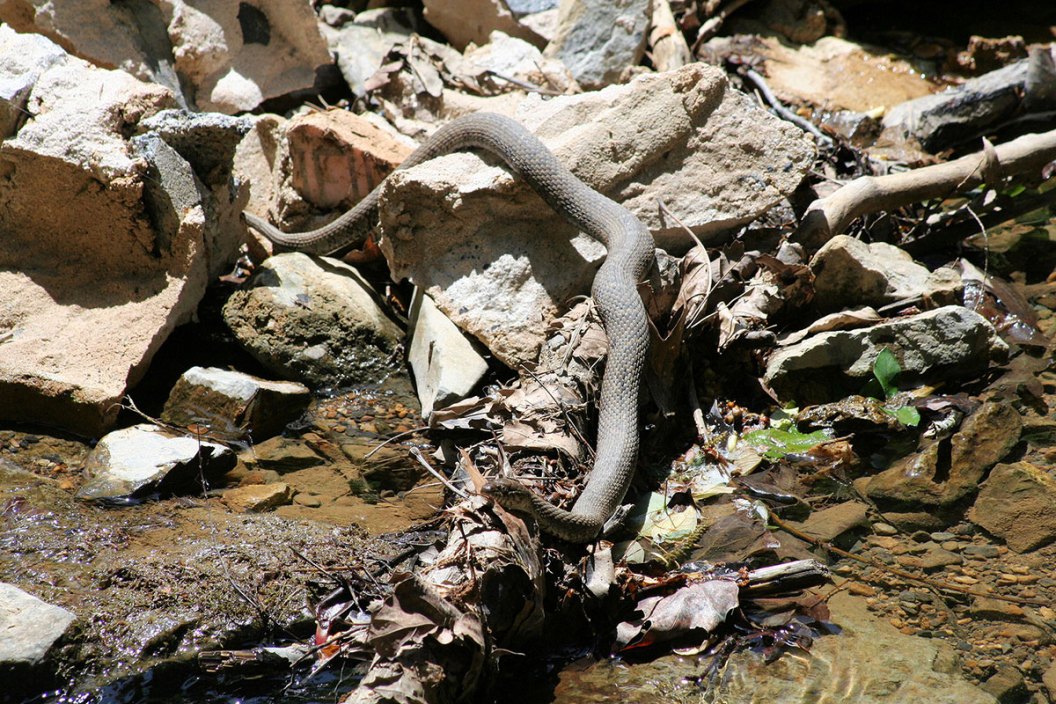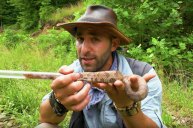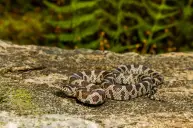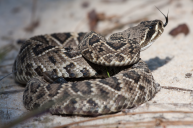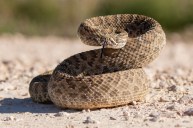Here are all of the snakes that are found in the state of Virginia.
Sure, maybe not everyone out there, sportsmen and women included, is extremely well-versed in knowing which snakes live in which state.
All the same, we're willing to bet that there will come a time when you might just need to refer to some information to remind yourself what it is that you're currently looking at on that trail you've found yourself walking on.
Folks in Virginia like to get outside, whether they're hunting, fishing, or just enjoying the great outdoors. If you knew you could just pull out your phone and check a snake ID, wouldn't it be a little easier on the mind?
Being that there are venomous and non-venomous snakes alike living within the borders of the Old Dominion State you may just want to familiarize yourself with them just as a precautionary measure. Alternatively, you may just like snakes. This might be a good time for a reminder that snakes, while being the slithering reptiles they are, are quite beneficial to nature.
Even the dangerous species have their responsibilities when it comes to keeping the rodent populations in check, and some species even eat each other. While this may seem a bit barbaric to some, nature has its checks and balances. Ultimately, snakes should be left alone, observed from a safe distance, and generally steered clear of when possible.
We'll start off with the species that are of least concern to people and then move on to the ones that can pose a risk to campers and other outdoorsmen, as clarified by the Virginia Herpetological Society.
Non-Venomous Snakes of Virginia
- Eastern Wormsnake
- Northern Scarletsnake
- Northern Black Racer
- Northern Ring-necked Snake
- Southern Ring-necked Snake
- Eastern Mudsnake
- Rainbow Snake
- Rough Earthsnake
- Eastern Hog-nosed Snake
- Eastern Kingsnake
- Northern Mole Kingsnake
- Eastern Black Kingsnake
- Scarlet Kingsnake
- Eastern Milksnake
- Eastern Glossy Swampsnake
- Northern Watersnake
-
- Brown Watersnake
- Plain-Bellied Watersnake
- Northern Rough Greensnake
- Smooth Greensnake
- Eastern Ratsnake
- Red Cornsnake
- Northern Pinesnake
- Queensnake
- Dekay's Brownsnake
- Red-bellied Snake
- Southeastern Crownsnake
- Ribbonsnake
- Eastern Gartersnake
- Mountain Earthsnake
- Eastern Smooth Earthsnake
Facts About Virginia Snake Species
Here are some fast facts for a few of these common species.
The Eastern Kingsnake is widely known as a predator of other snakes, especially the venomous species. These snakes are more commonly encountered in the Coastal Plain and Piedmont regions than in the mountains of Virginia, but are sometimes found elsewhere.
Eastern Kingsnakes are also known for vibrating their tails when approached, and for discharging musk from the glands at the base of their tail if handled.
Eastern Ratsnakes are the most commonly encountered snakes in Virginia, and are unfortunately also the most commonly road-killed snake in the state. These constrictors eat many small mammals, birds, and bird eggs, and are commonly called "Black Chicken Snakes" due to their affinity for chicken eggs.
As in other regions where they exist, northern watersnakes are generally found on or near the water. They are all generally brown in color (or some variation) and can reach up to four feet in length. This predator of fish and especially amphibians can be particularly nasty to people that try to capture or handle it in any way by repeatedly biting the offending hand of the person in question.
Venomous Snakes of Virginia
- Eastern Copperhead
- Northern Cottonmouth
- Timber Rattlesnake
You may have heard of the Copperhead as being called the "dumb rattlesnake" but the truth is it's anything but. Copperheads have the scientific name of Agkistrodon contortrix, and according to VHS, "Agkistrodon is derived from the Greek word ancistron which means "fishhook". This is in reference to recurved fangs."
This can and will scare the heck out of anyone who has heard of their venomous reputation as their fangs provide the means to inject their venom deep into prey or as a defensive measure. It is said that young Copperheads may be the most dangerous since they cannot fully control the muscles used to regulate the amount of venom injected.
They can live anywhere from hardwoods to high-ground swamps, and from suburban woodlots to forested dunes around beaches.
Folks still like to call the Northern Cottonmouth "water moccasin" and that's fine since most understand what it means. These venomous snakes are one of the larger, more heavy-bodied snakes in Virginia and in fact anywhere where they live. They have a penchant for being long (five feet or more), and have a reputation for not backing down to humans.
This is not to say that they are aggressive, but in fact they will flatten their bodies, vibrate their tails, and elevate their heads, usually exposing their white inner mouth that gives them their proper name. But be warned: They will not hesitate to bite if molested.

The Crotalus horridus or Timber Rattlesnake is the only species of rattlesnake indigenous to Virginia. Timber rattlesnakes are mainly found in the western mountainous regions of the state, and a small area of southeastern Virginia where they are known as canebrake rattlesnakes.
Timber rattlesnakes primarily feed on mammals such as mice, voles, and even chipmunks, but will eat some frogs and birds if they can. Probably the most common misbelief related to these snakes is that the number of rattles indicates the age. One segment is added at each shedding event, with juveniles shedding an average of eight times during their first five years and adults averaging once or twice a year at the most.
The Last Word
Between the pit vipers of the region and the harmless snakes they reside next to, the native snakes of Virginia are an integral part of the ecosystem. Venomous snake bites are rare but they do happen. For instance, it's worth it to learn what a copperhead or other venomous snake looks like so that if you find one, you'll know enough to leave it alone. Most bites occur when people try to kill or move a snake.
Most of the snakes that you may encounter on a trip to Virginia will likely be harmless, but when in doubt, give it a wide berth and go around. Snake bites, while rare, can still be quite dangerous. It is imperative to stay on the marked trails and keep safe distance away from these reptiles at all time.
Looking for a little more or even hot lunch for your hunting blind? Follow my webpage, or on Facebook and YouTube.
NEXT: GEAR REVIEW: POLARIS GENERAL XP 4 1000 PURSUIT EDITION
WATCH
